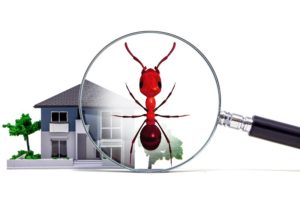Pest Control Termites – What To Look For
Pest control termites is a cause of concern for homeowners because of the insidious damage they can do before you even know they are there. All too frequently they are only discovered when someone’s foot goes through the floor or some similar mishap. When you have discovered termites on your property, it’s imperative to contact pest control termites in Springfield, Missouri, for an inspection and treatment as soon as possible.

During the fall and winter termites are very active. You should inspect your property for signs of termites and if present, contact an exterminator for pest control termites. Early detection and pest control of termites can prevent severe damage to your home. Many people don’t have even a vague idea as to how to identify a termite, but once you know what to look for you will be able to tell fairly easily if they’ve moved in.
Signs You May Have Termites
Termites that live mainly in dry wood are called drywood termites and are arguably the most common species in this area of the Midwest. They can be found inside window and door frames, the foundation of your house, outdoor sheds, wood retaining walls and even dead trees. They can stay virtually invisible for long periods of time. Drywood termites will eat any kind of wood – from wooden furniture to baseboards.
Clicking Sound in Walls
Soldier termites make quiet clicking sounds and if you listen closely you can hear them on the inside of the walls. The sound is caused by banging their heads against the wood or shaking their bodies to signal danger to the other termites. Worker termites are noisy eaters. Put your ear close to any wood that is infested with termites and you can hear them. They are very audible.
Behavior
Termites can detect vibrations and noises using their antennae and legs.
Flying Termites
Usually, the first sign of a termite infestation is the presence of flying termites. Swarming termites (or alates) have left the nest to find a mate and start a new colony. Some species swarm at night, others in daylight. Drywood termites tend to swarm after rain. Flying termites lose their wings shortly after finding a mate and will leave the discarded wings behind.
White Ants
Some people confuse termites with white ants but there is no such thing as a white ant – if you think you’ve seen one, you were actually looking at a termite. It’s an easy mistake as the two pests are similar in size and shape and in some cases behavior. The difference is that termites are a light colored almost translucent creamy white. Termites have straight antennae, unlike ants whose antennae are bent. Termites have a thicker waist area than ants. Both flying ants and termites have two sets of wings. A termite’s wings are equal in size compared to ants who have one set that is larger than the other.
Hollow Sounding Wood
Drywood termites eat from the inside out, leaving a thin shell-like veneer of the wood. If you lightly tap on an area that has termite damage, it will sound hollow or papery. This is because part or all of the timber inside has been eaten away.
Tight Fitting Windows and Doors
Warped, too-tight doors or windows that are hard to open or close can indicate termites are present, especially in damp or hot weather. Termites produce moisture as they eat and tunnel through the wood causing it to swell.
Tunnels
Although they are difficult to see at first glance, the tunnels the termites make, called “galleries’, are a sure sign that termites have set up housekeeping. Old lumber lying around is an ideal home for them. Anytime you see a broken or rotted piece of wood, that is evidence of termites.
Subterranean Termites
This species prefers to live underground, as the name implies. They especially love tunneling underneath the garden or house.
Droppings (Frass)
Termite droppings, called frass is probably one of the most obvious signs of termite infestation. Drywood termites push the frass out of small holes near the entrance to their nests, unlike subterranean termites that use the feces to build their tunnels. The waste is seen as small black marks and a dark, powdery substance around the area of infestation.
Most pest control specialists agree that homeowners should get a termite inspection once every one to two years. Waiting longer just gives termites the opportunity to settle into their happy home and do their damage. Frequent inspections are vital to catching an infestation and having professional pest control treatment as early as you can.
Any time termite activity is found, the technicians at Expert Pest Solutions can provide you with recommendations for pest control treatments. During the inspection, we look for any visible signs of termite activity or damage. For more information or to schedule an inspection for pest control of termites give us a call right away. We provide service to Springfield, Nixa, Ozark and surrounding areas.
Expert Pest Solutions does termite inspections and treatment to all structures. Prices vary depending on the size of the structure and type of foundation. Call 417-413-4776 for answers to your questions or to schedule an inspection. We also offer quarterly service plans. You may also contact us ONLINE.
